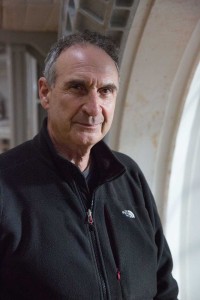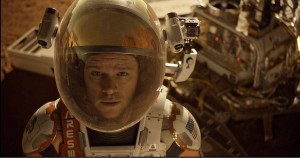![]()

Max is a longtime collaborator of Scott’s. The two were working on another project altogether when it got postponed and then The Martian arrived on the scene. “This came up out of the blue. It was a fantastic project with a page-turning script, a great big adventure story based in rocket science,” said Max. He grew up in the 1950s during the height of the space race and spent his weekends as a child in rocketry clubs trying to make rockets fly in parks so this project especially appealed to him.

As much as the film is based in reality, it still had to be visually interesting and one of Max’s major design goals was to make things stylish and inspiring looking and not totally nerdy. “Because it’s 15 or 20 years in the future, we felt free to give NASA and JPL a style upgrade. We presume there would be maybe some new materials that could transmit light and provide shielding from cosmic rays and solar rays that don’t exist to the level that they do now because we are making technological leaps in that time frame. So we could make things more cinematic and cooler looking,” he said.
Max’s favorite scenes that he worked on were the gravity wheel ones. “As they flew down the corridor, disappeared through the revolving rabbit holes, turned up in the revolving crew lounge, recreation room or gymnasium,” he said. These stylish sets were all moving and were physical as well as CGI extensions making them the most challenging to create. “They kind of give you a glimpse into what life in interplanetary space will be. NASA gave us its blessing in how the wheel would work and function. And at the same time, I wouldn’t mind living in that Italian-inspired furniture. So there was a lot of work put into how to do that set.”





